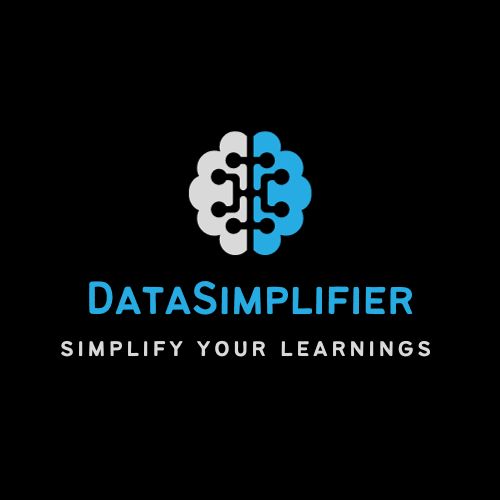This valuable guide caters to Indian students and working professionals who want to excel in AI, ML and data analytics. We’ll explore clustering in Python in detail to help you build your knowledge and confidence so you can tackle your next data analysis problem or walk right through your next interview.

Clustering techniques are fundamental to many data science applications, including customer segmentation and image recognition; this guide will help you understand all the key concepts, including hierarchical clustering with Python and clustering with Python examples. This is the definitive resource for all your clustering with python queries.
This ability is beneficial in countless scenarios, ranging from classifying customers by their purchasing behavior, through detecting anomalies in network traffic (a fundamental part of cyber security). This step-by-step guide will lead you through the various clustering algorithms using python, covering clustering with constraints python and showing you how it can help with some real-world data concerns.
Moreover, we will also walk you through clustering and python example scenarios, to allay your doubts on how these concepts are practically useful. With this comprehensive approach, you have the theoretical foundation and practical application skills necessary for an interview or career progression. In the end, Clustering with python will eventually put you in the forefront of your chosen field.

This guide provides step-by-step insights into the daunting process of clustering with Python scope, dividing complex theories into digestible modules. Additionally, we’ll explore face clustering using Python, another interesting area of application with real-world implications in image processing and recognition. This guide spans the entire range of clustering with python, including constraints, from fundamental principles of clustering with python all the way to hierarchical clustering with Python — just enough detail to give a complete picture. We believe this guide is the ultimate resource for clustering with Python, and how it can benefit all kinds of data science use cases.
Clustering in Python Techniques: A Deeper Dive
Now, let us understand the actual methods of clustering with python. Hierarchical clustering in Python is one of the most intuitive approaches to defining the clustering process and visualizing it. And we’ll go through some clustering examples with Python and show how to deal with different types of data with this powerful technique.
We shall discuss both basic and advanced applications and show you how to utilize clustering algorithms with python in real time applications. Application of text analytics techniques on clustering documents using python can give you a good idea.
We will focus on some practical use cases starting from customer segmentation to document clustering with Python. We will cover multiple clustering algorithms with the usage of Python, ranging from K-Means to hierarchical clustering to more specialized techniques. Plus, we will also discuss some advanced concepts like clustering with constraints Python, where we will learn how to introduce constraints into clustering.
It will cover various data types that will help you to reckon with the concepts in the interview effectively. The Face clustering with Python is an important one and opens the gate to image recognition and analysis.
Beyond theoretical perspective, we will also give practical python code examples to allow you to perform clustering with python in your applications. Such real-world examples will definitely help in doing well during data science interview preparation and improving your practical skills. Next, these illustrations of clustering with Python cover a lot for you to get a competitive advantage.

Interview Practice and Career Development
Mastering Clustering with Python makes you stand out in the Data science job market. Understanding clustering with Python principles is a very basic demonstration of your problem-solving abilities and critical thinking, which helps the recruiters in judging you better. This is important not only for getting a job but also for advancing your career.
Such expertise gives you an edge in the interview process. This will definitely improve your interview performance and ensure that your knowledge is on par with industry standards.
In addition, hands-on clustering with Python experience will give you the confidence to solve real-world data science problems better. By the end you will gain practical knowledge to handle such complex situations with a strategic approach along with right tools and strategies for organization of clustering through Python. This involves knowing how to deal with different types of data and different sizes of data, as well as how to apply Python tools and techniques for clustering effectively.
This is an exhaustive guide that can take you through much clustering algorithms, providing you the insights to understand the complexities of data. It helps you know how these algorithms work and you get a grasp of clustering with Python which is crucial in being a strong data scientist.

Mastering the Path to Data Science: Conclusion
I hope this deep dive into clustering with Python has given you a solid understanding of these techniques so you can draw on your knowledge confidently when searching for jobs. You would have built a sound theoretical and a great practical foundation, which is the key in career progression.
Worry no more, this ultimate guide has covered all you need to know about clustering in Python — including talking about the algorithms, how to implement them in Python and their applications across several fields. With this practical knowledge and insights, you can shine through interviews and continually implement these skills in a data-centric world.
Our training combines broad content coverage with a concise and accessible delivery format to help you dissect difficult concepts into chunks that are easy to digest. You are now equipped to tackle data science problems with confidence, which will give you a great advantage over your friends when you all begin to search for a job.
Do keep in mind that this is only your first data science journey. To keep learning and to get updated with latest happenings in your field, you can also join our 10+ Telegram channels for AI, ML, Data Science and Cyber Security. We also have dedicated job alert groups, so you are the first to know about opportunities in your areas.
And this is the end of our clustering tutorial with Python; now you have the basic skills to boost your career. To reward you for taking the time to read this detailed guide, we’d like to give you a secret message. Full of encouragement and support, by calling it as the best friend and expert at your service through a premium Telegram channel, leave a comment with your Telegram channel name and we will respond with link. Next, we invite you to be part of this private club.
You belong in this exclusive network!
Announcement: Data Science Internships
We share internship opportunities for data science enthusiasts in our telegram groups. And follow us via our dedicated channels to benefit from these today.

